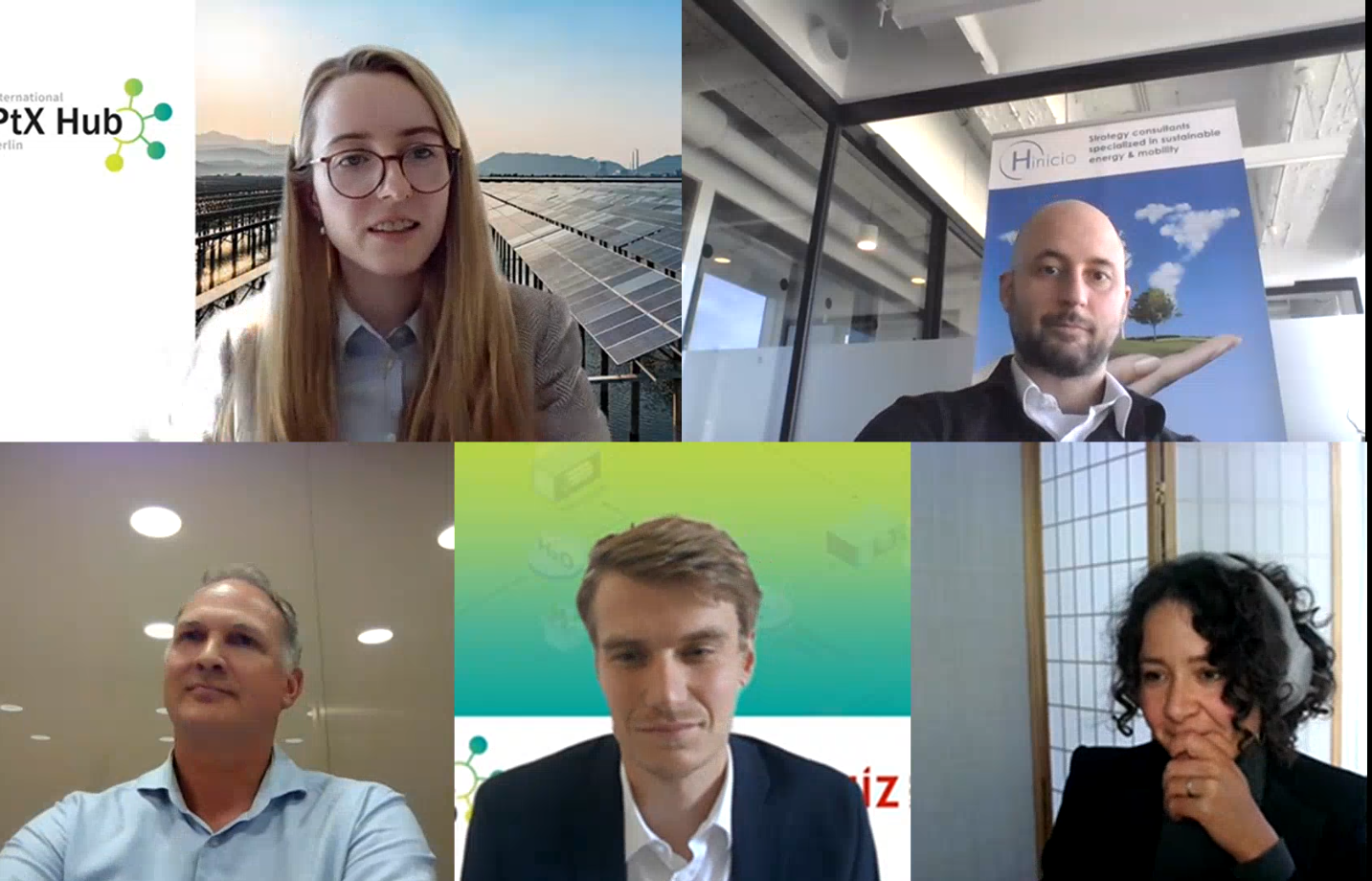Discussions on upcoming regulatory frameworks for green hydrogen oftentimes center around the EU. However, the latest announcement REPowerEU that aims at 10 million tons of hydrogen imports into the EU by 2030 triggered discussions on whether this amount of hydrogen can be produced by exporting countries. It becomes clear that it is necessary to take the perspectives of and consequences for non-EU countries on the upcoming EU regulations into account.
Uncertainty on requirements for renewable hydrogen
At our session at this year’s extended programme of the European Sustainable Energy Week, we discussed just this topic. The four panellists demonstrated general as well as very detailed aspects that are unclear, overlooked or in need to be elaborated more upon in further consultations between policy makers of the EU and non-EU countries.
Very often it is believed that the Delegated Acts do not apply to producers from outside of Europe, which is a misconception. It leads to lots of projects ending the feasibility analysis phase without complying to EU regulation and will therefore eventually not catch a premium price.
– Wouter Vanhoudt, Hinico
Firstly, the regulatory framework is uncertain itself in terms of when it will come into effect. The two Delegated Acts of the RED II propose requirements on sourcing renewable electricity and emission accounting for renewable hydrogen, but are not yet agreed upon. Both Delegated Acts still include open questions especially for non-EU countries, for example on the integration of the concept of bidding zones or co-processing. Secondly, the panellists highlighted a lack of sustainability criteria like water usage that go beyond electricity sourcing and emission accounting as well as limited incentives for local value creation in developing countries. Thirdly, overcomplicated regulations and requirements could potentially make other markets more accessible to hydrogen exporting countries in comparison to the European one. This in turn could endanger the fulfilment of the EU’s ambitious hydrogen targets.
If demand outstrips supply, projects will choose to export to the easiest jurisdiction. So if it’s too difficult to export to a market, then the industry may simply export somewhere else.
– Lars Hansen, InterContinental Energy
If interested in the whole discussion, the slide decks of the presentations of the panellists and the recording of the sessions are available below.
Panellists
- Wouter Vanhoudt, Hinico (Presentation on “Impact of Impact of EU Regulation on Green H2 Exporters through RED II (Revision) and Delegated Acts”)
- Maria Pastukhova, E3G (Presentation on “EU Hydrogen Regulations & Impact on non-EU H2 Producers”)
- Lars Hansen, Intercontinental Energy (Presentation on “Complying with EU Hydrogen Regulations in Non-EU Countries”)
- Jan-Hendrik Scheyl, PtX Hub (Presentation on “Perspectives from Partner Countries – Reasonable Requirement or Harmful Barrier”)
Moderator
- Johanna Friese, PtX Hub
In collaboration with Hinicio and Dii Desert Energy, the International PtX Hub facilitated this virtual session at the extended programme of this year’s European Sustainable Energy Week (EUSEW).
Johanna Friese contributed to this article.
